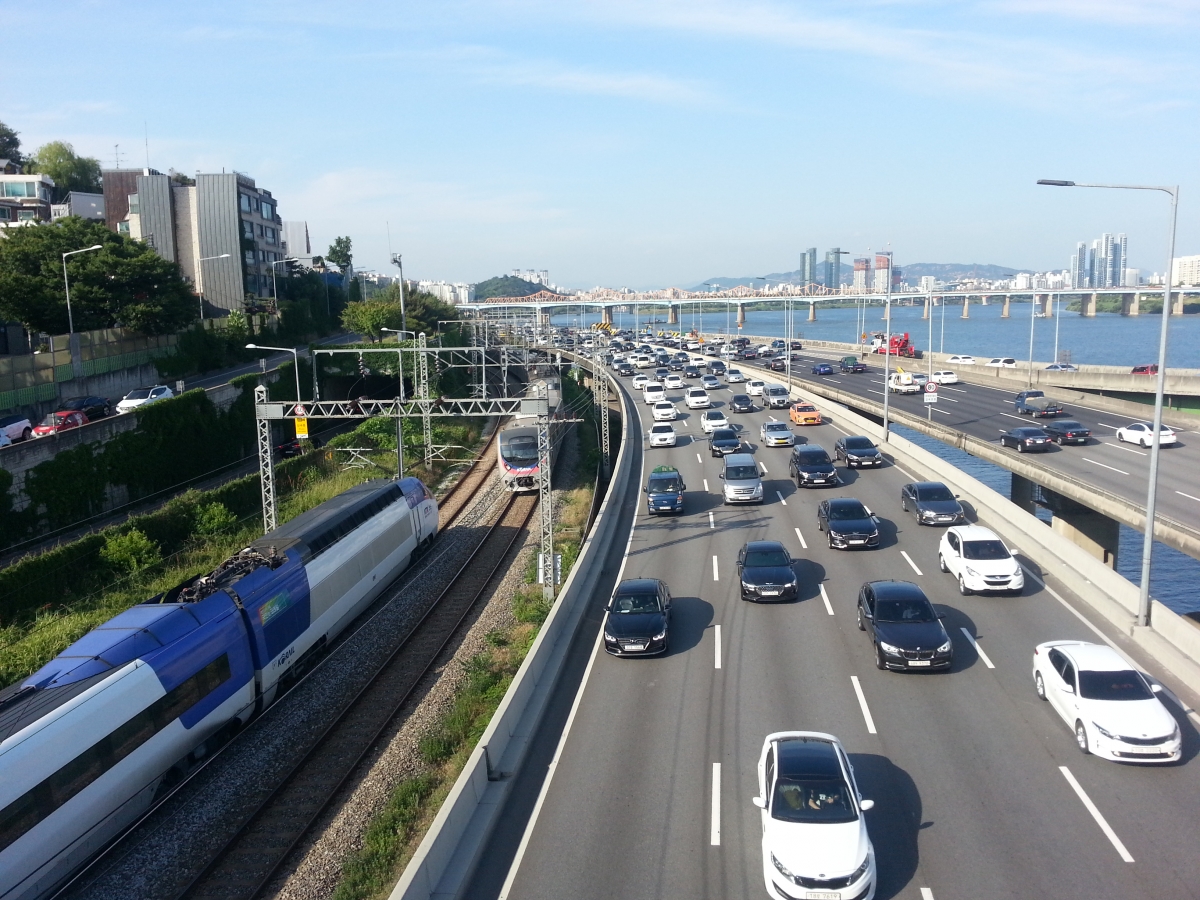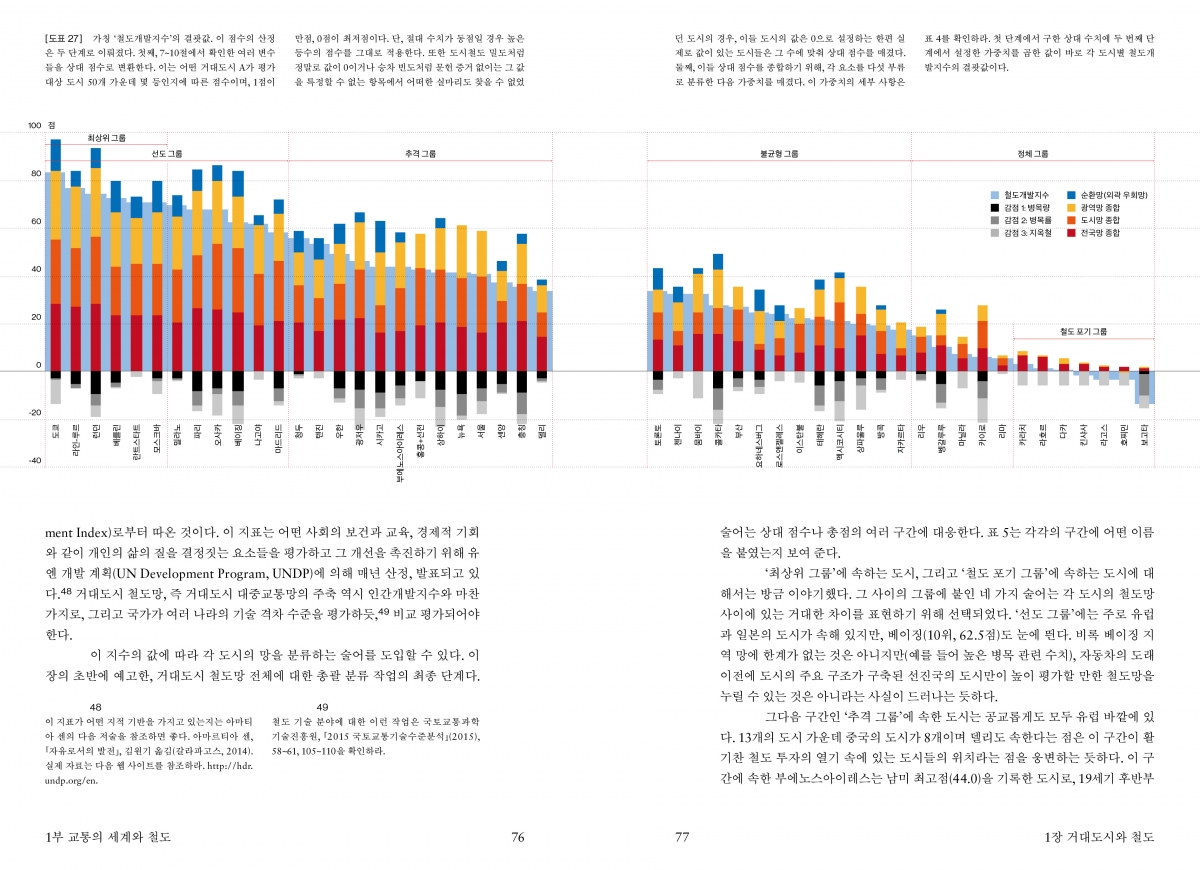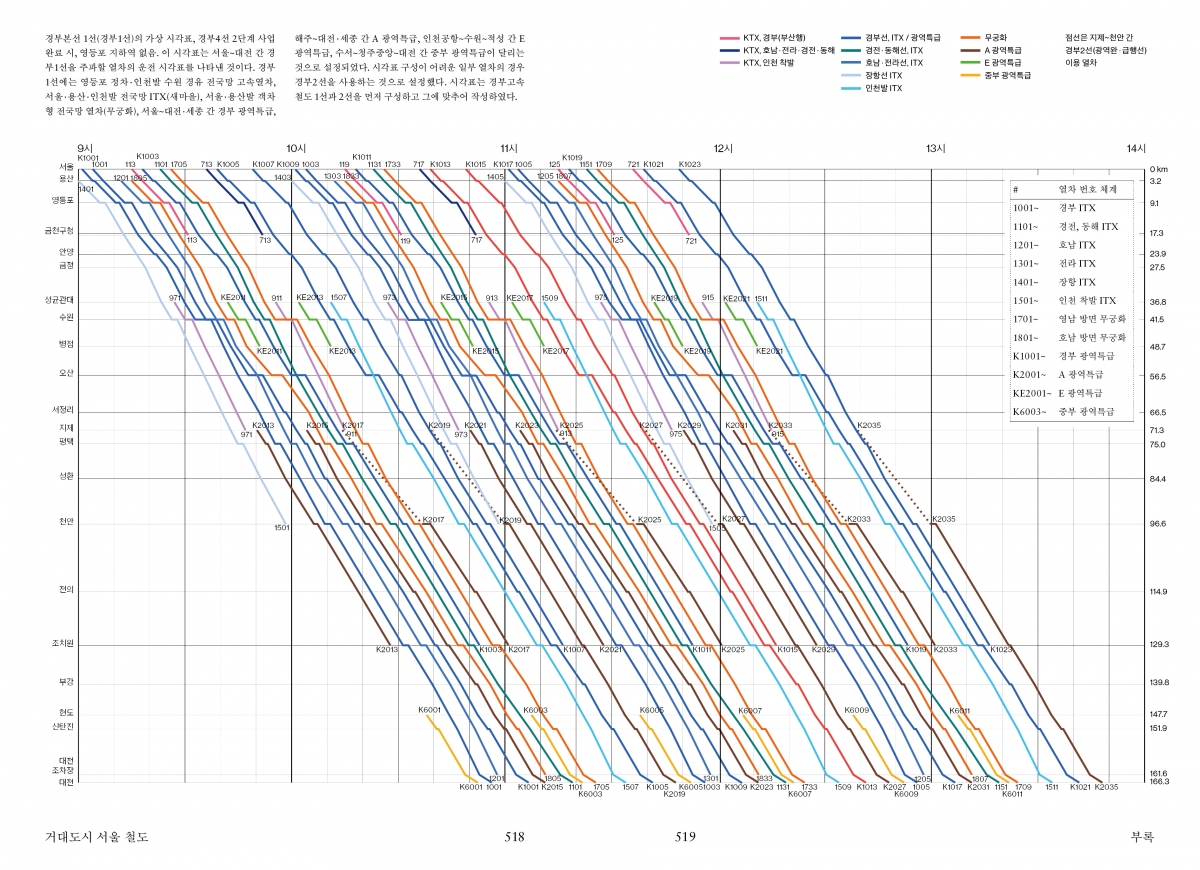Jeon Hyeonwoo’s new book, Railway of Megacity Seoul: How to Transition into the Future in the Era of the Climate Crisis is presently a focus of public attention. The result of seven years’ work, this is a book by an author who majored in analytical philosophy and is a so-professed rail buff. It is encyclopedic, with 552 pages that cover facts drawn from the past, present, and future of Korean railways. SPACE interviewed the author to hear more about issues facing railways today, and their legacies, such as what they have meant to us and what they should now hope to be.

ⓒJeon Hyeonwoo
Bang Yukyung (Bang): Your book is a comprehensive research project covering the history and contemporary status of Korean railways with criticism and suggestions. What prompted you to write this book?
Jeon Hyeonwoo (Jeon): It was on the Gyeongin Line that I first experienced a train journey, which I took under the careful guidance of my parents when I was a child. Whenever I visited Seoul with my parents, I had to take the ‘Hell metro’ at Sindorim Station. Even through a child’s eyes, it seemed ‘jam-packed with people’. When I looked up the then statistics, I found that one railway carriage could accommodate about 500 people, more than three times its capacity. When I was a student, I lost contact with railways for a while because I walked to school, but I returned to the Gyeongin Line after I entered university. However, that decade was not long enough to improve the terrible conditions on this railway. An interview in a newspaper described the Gyeongin Line as a ‘livestock transport train’. Looking for the answer to a question, ‘Should trains transport people in that way?’, I plunged into the history of the railway. In fact, what forced me to start writing the book was reading about the railway union strikes against the privatisation and spin-off projects of the Suseo High Speed Railway in December 2013. At the time, the Ministry of Land, Infrastructure, and Transport and the labour union were opposed to each other, but no one discussed financial conditions of the railway and its characteristics as a means of transportation. So, I started to work on a concept and a framework through which I could accurately explain the situation on the modern Korean railway.
Bang: You are introducing a number of new indicators and concepts in your book. What are the connotations of those indicators?
Jeon: We can say railways are the backbone of our public transportation system. However, to prove this was not easy. TV news and newspaper articles often noted that Korea had an advanced railway system, and I had this persistent doubt, ‘Can it really be true?’ I wanted to explain it through accurate comparisons with railway networks in other countries. The ‘Railway Development Index’ is a concept I created to express this quantitatively. I compared and analysed the conditions of railways in 50 major cities around the world by quantifying the size of terminal stations, the number of double-tracks across borders in their major cities, the rate of operation, passenger congestion, and railway bottlenecks, and according to this list, Seoul ranked 22nd and Busan 30th! In terms of this grade, it is equivalent to about a B-. Some issues are still to be corrected but I hoped that this indicator would form a starting point so that we might see how railways affect our urban environment and quality of life, while also providing a three dimensional look at our city alongside other indexes such as the Human Development Index (HDI).
Bang: I heard that you started to write in 2013, but it took 7 years to publish the book. Were there any changes or variables to your writing process?
Jeon: While organising the data, I calculated the churn rate at which people stop using public transportation based on statistics from public transportation usage. It showed that the further one lives away from the city centre and the more difficult it gets to use high-speed rail networks, the more rapidly the use of cars increases. I defined the coexistence of the city centre, where public transportation is favoured and the suburban area where automobiles have an advantage as a ‘divided transportation system (between urban & suburban)’. In plain language, we feel in Seoul ‘A bus stop may be right up ahead’ but when we cross the border of Seoul, we may think ‘It’s merely a mission to get a bus stop’, and when we cross the border of Gyeonggi-do, say in Chungcheong-do and Gangwon-do, we will think ‘I have to take a taxi because a bus service is rarely available here’. In this way, the quality of the service in our public transport network becomes poorer the further we are from Seoul. However, the main source of national finance for maintaining railways is fuel taxes. The greater difficulty people have in using railways, the more people tend to use their cars, and this naturally leads to paying more taxes. This explains why there is a backlash in the provinces: ‘Why are you spending my taxes on railways that I don’t use?’ Recognising this problem, I described the financial system behind railways from the perspective of social contraction in Chapter 7 of Part 3.

Bang: Urban density and railway network density have a correlative relationship. What do you think, from the viewpoint of urban planning, is the foremost problem in areas that have poor access to rail services?
Jeon: I mentioned our divided transportation system. It is a natural that as we get further away from a city centre, the use of private vehicles increases because it is not served by an adequate public transport network. However, Korea has a different inside story. When we examine the new city developments carried out over the last 20 years, we find many of them featured no proper railway system planning. The Wonju Innovative City decided to close their Bangok Station at the end of this year, and an urban railway never featured in discussions even at the outset of the planning for Sejong City. Osong Station, the nearest station to Sejong is over 20km away. Even though Sejong City was planned with a modal share of buses up to 70% in the urban planning stage, life without a car in the city is inconvenient. Urban designs outside of Seoul, especially outside of the metropolitan area, which are carried out without any consideration for public transportation, eventually produce cities dominated by cars. To find new ways of leading broad, integrated change in these cities may now be our main task.
Bang: Criticism often arises over the fact that railways and stations are fragment our urban spaces. Physically, the railway network and train stations have different characteristics. What forms should railways and stations take in our cities?
Jeon: The main purpose of a railway network is the smooth operation of trains, and a station is mainly designed as a platform to provide train passengers with access to an external transportation network. As the floating population increases, land prices are likely to rise and are bound to face high development pressures. The interests of many different parties are entangled in the railway space. It is up to spatial designers and city planners. However, I would like to argue that we should plan spaces that are convenient for transfer and access without compromising the original function of railway. A triangular area with approximately one-kilometre long sides in Bundang-gu, adjacent to Seohyeon Station, Pangyo Station, and Imae Station, is an example of failed railway spatial planning. Four lines, including Sinbundang Line, Bundang Line, Gyeonggang Line, and the upcoming GTX A, will pass through here, but transfers can only be made between two of those lines respectively, and even GTX Station is to be built between Pangyo Station and Imae Station. We need to reflect on urban planning without considering the transportation network at large. Also, as the result of recent arguments that railways are an obstacle to our urban environment, a few railway networks were moved to the outskirts of the city and existing railway stations in the city centre are used for other purposes, such as cultural spaces and parks. The idea is not logical as people gathering in the city centre and that related activities take place when a railway station is in a city centre with good accessibility.
Bang: The Gyeongui Line Forest Park, one of the most recent contentions, is also addressed in your book. What do you think of the development of a public railway site such as this?
Jeon: We have to mention two issues here: the ‘underground railway’ and the ‘park developed from a railway’. The Gyeongui Line Forest Park was originally the site of the Yongsan Line running from Yongsan to Gongdeok, Hongdae, and Susaek, which allowed freight trains to travel directly to Munsan without passing through Seoul Station. If maintained, this section could have reduced the burden on Seoul Station and Yongsan Station, the core of railway network in Seoul, but freight trains could not use the track after it went underground. Moreover, it failed to secure passing siding between Yongsan to Sangam, which forced all of the trains to follow the front train. The reduced capacity of the Gyeongui-Jungang Line often suffers side effects, such as significant delays, but more serious than this is that the link with the North Korean transportation network was weakened. While the government is actively promoting the necessity and blueprint for a link to the Eurasian railway network, it has also weakened the railway network in Seoul, the physical foundation of this link. This is the result of the improper recognition of the functions, roles, and values of our railway system.
Bang: The title of the book seems to deal with climate change as a particularly vital pressure. How is climate change connected to public transportation?
Jeon: The issue addressed in Chapter 8 of the last three parts of the book is climate change. I started to cover the issue at the end of 2018 when I had already drafted most of my manuscript. In an era in which new modes of transportation are emerging, such as self-driving cars that threaten public transportation climate change has become a kind of cheat way of talking about the sustainability of railways. The time has come when the criterion for evaluating human material activities is concluded as ‘carbon emission quantity’. In figures, railways are 10 times more energy efficient and 5 times more carbon efficient than passenger cars. As of 2017, transportation accounted for 25% of carbon emissions by humans through fossil fuel combustion, while cars accounted for 75% of total transportation energy consumption and 73% of total carbon emission. This quantity is too overwhelming to be compared with railways, which composes less than 2% of transportation energy. Now, the transition from cars to railways forms an inevitable future.
Bang: Faced with the climate change crisis, I agree that a transition from a motorised city to a rail-oriented city is essential. What action should professionals and the public take in this regard?
Jeon: In urban design, the question of how to reduce carbon emissions caused by transportation will be a focal point and continued challenge. In the past, constructing and widening more roads was expected to improve overall traffic conditions, but the measures had the opposite effect. More roads resulted in more car traffic. A practical way of solving this was to reduce capacity by controlling the roads. It is the so-called ‘road diet’. Continuous implementation of central bus lane system and the demolition of overpasses in Seoul are coextensive. In the long run, it is necessary to freeze capacity on suburban highways and to dramatically reduce passenger cars in the city centrs. I have one suggestion for change at the individual level; to measure one’s own carbon emissions during journeys. Accordingly, apps to calculate carbon emissions should be developed. Now is the time for individuals to change their consciousness of this issue and to actively find ways of minimising their carbon footprint from transportation.

ⓒWorkroom Press
Virtual timetable of Gyeongbu Line suggested by the author. This is the graph used on the cover of the book. Jeon Hyeonwoo, Ibid, pp. 518 – 519.




